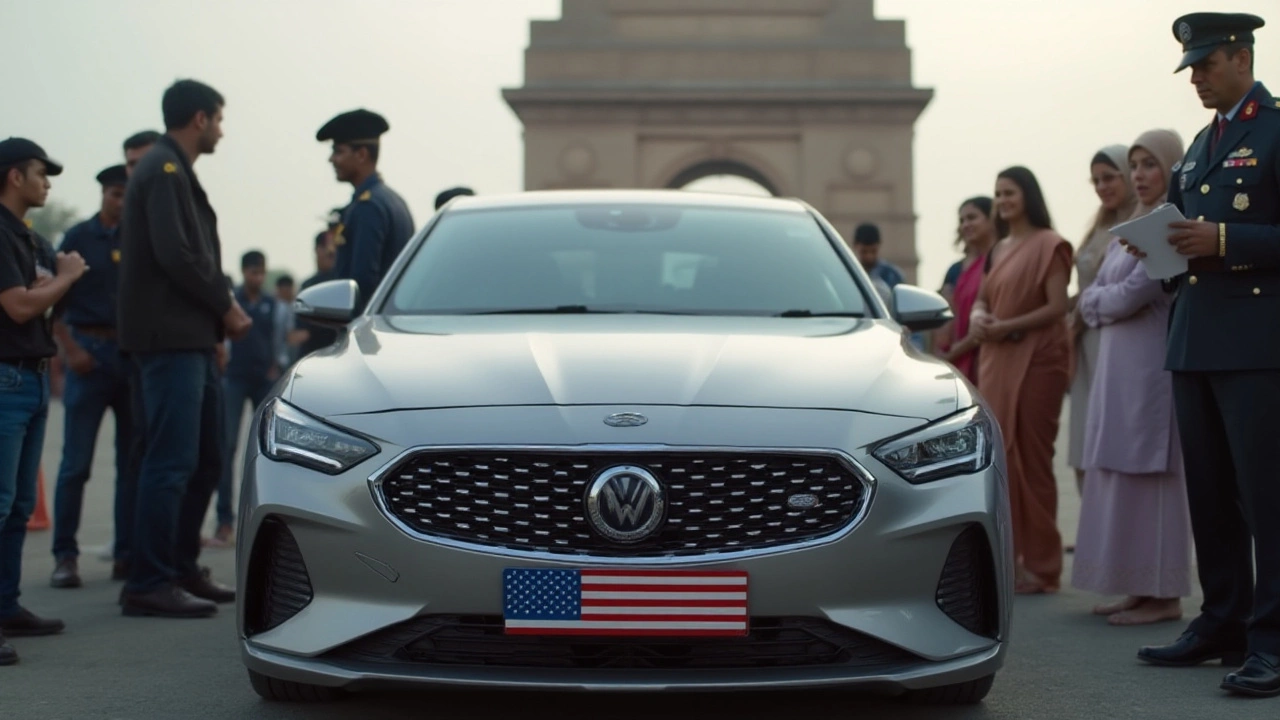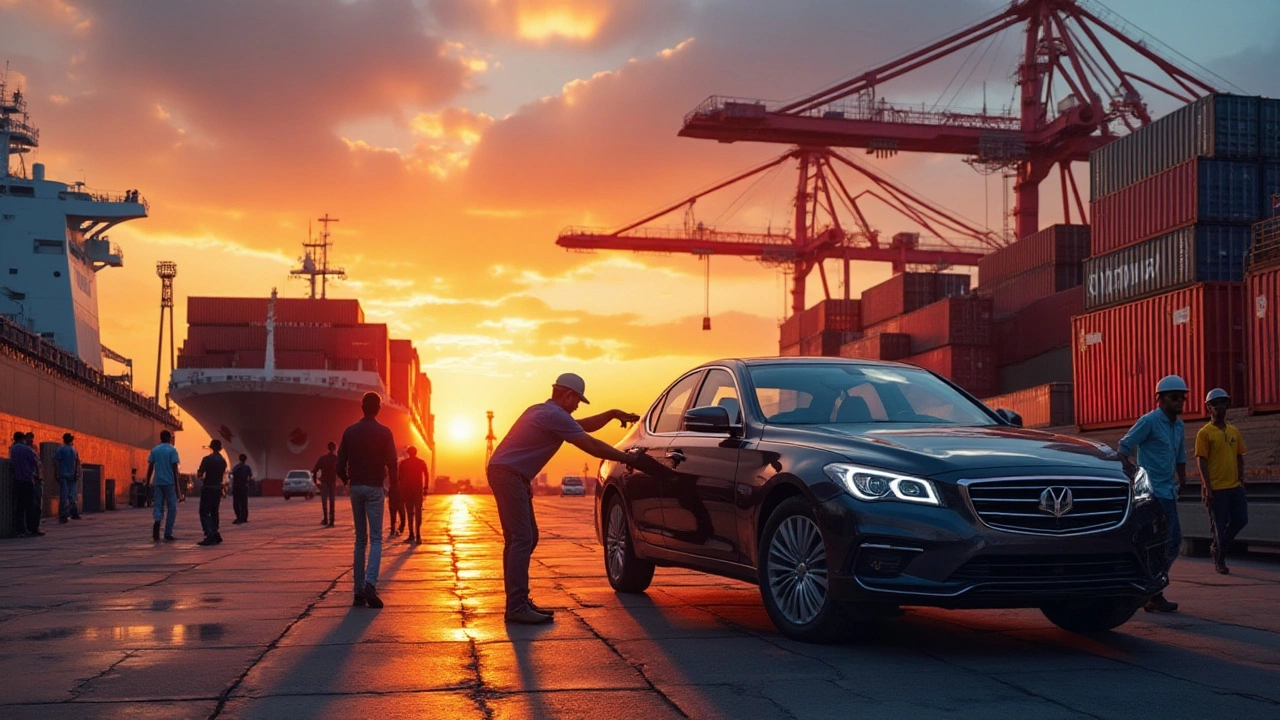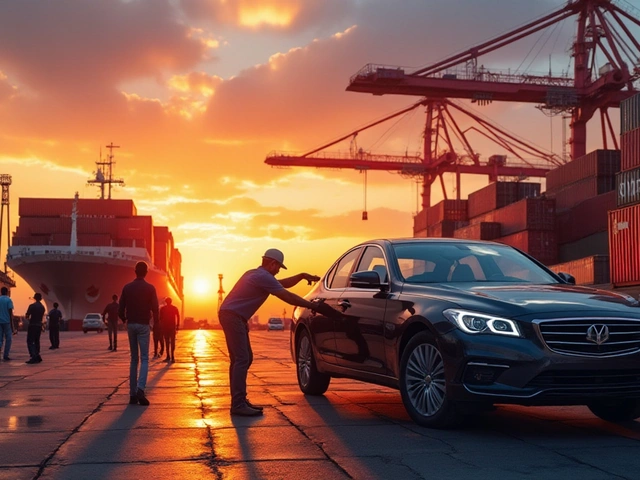Transferring a vehicle from the United States to India is not a straightforward task, but it’s certainly possible with the right guidance. Much like piecing together a puzzle, this process requires an understanding of both the regulations and logistics involved. Whether you're an expat returning home or someone who just snagged an irresistible car deal in the States, knowing how to handle this transfer can save you from potential pitfalls.
The path to successfully importing a car begins with getting familiar with the regulations set by Indian authorities. It's crucial to stay informed about the duties you’ll be obliged to pay and the documentation you'll need to gather. Selecting the best shipping method is your next hurdle—whether you opt for containerized shipping or the less expensive roll-on roll-off service. Once the car lands in India, you’ll face the customs clearance process, which can be intricate without proper preparation. Finally, ensuring that your vehicle complies with Indian road standards is the last piece of the puzzle.
- Understanding Import Regulations
- Choosing the Right Shipping Method
- Customs Clearance and Duties
- Adapting Your Vehicle for Indian Roads
Understanding Import Regulations
Importing a car from the USA to India involves navigating a dense web of regulations that govern the entire process. It starts with a fundamental understanding of India’s import policies. Foremost among these is the Central Board of Indirect Taxes and Customs (CBIC), which manages the import duties. Cars imported into India are subject to fines, duties, and taxes that contribute significantly to the car's final price. It's essential to review the specific category your car falls under, as newer, luxury vehicles often face steeper charges compared to older models.
One must also consider the restrictions on vehicle emissions and safety standards. As India moved towards tighter environmental controls, the Bharat Stage VI (BS6) standards resemble the Euro 6 norms applicable in Europe. This demands that your vehicle meets or can be adapted to comply with these rigorous criteria. Failure to comply might result in denial of entry for the vehicle. It's wise to consult with environmental agencies in both the home and the destination countries to ensure no surprises when your car arrives.
Documentation plays a crucial role as well. From the car’s title and registration in the USA to shipping invoices and insurance papers, every document needs to be precisely filled out and available for inspection. It's not uncommon for first-time importers to encounter delays due to missing or incorrect paperwork. That’s why engaging with a customs broker, someone well-versed in Indian import laws, is often a recommended step, easing the burden and averting possible pitfalls.
According to the Director of Automotive Industry Standards, "The meticulous preparation before importing a vehicle cannot be understated. Knowing your compliance requirements not only saves time but also significant financial resources."
There are also special provisions for returning Non-Resident Indians (NRIs) and Foreign Nationals, which can drastically change the import landscape. These provisions may allow someone to import personal effects, including vehicles, under the Transfer of Residence scheme. Understanding these nuances is crucial for leveraging any potential benefits these special provisions offer.
In rare cases, the Indian government amends import laws to adapt to global trade movements, so staying updated is beneficial. Regularly checking the CBIC website and relevant trade announcements ensures compliance with the latest regulations. Armed with patience and adequate preparation, the complexities of importing a car from the USA can indeed be managed effectively, paving the way for success in transferring your beloved vehicle to Indian soil.
| Import Component | Requirement |
|---|---|
| Emission Standards | Must comply with BS6 norms |
| Documentation | Complete papers including title and insurance |
| Customs Duty | Varies per vehicle type |

Choosing the Right Shipping Method
Opting for the proper shipping method is a pivotal step in the car transfer journey from the USA to India. It's akin to setting the sail direction before embarking on a voyage across the ocean. With several options available, each with its own advantages and challenges, it's essential to make an informed decision based on your priorities, whether they be cost, security, or convenience. One of the most common methods is containerized shipping. This involves placing your car inside a secured container, offering a significant level of protection against potential damages and external elements. It is particularly beneficial if you wish to ship personal belongings alongside your vehicle, as these can be packed in the same container.
An alternative option is the roll-on roll-off (RoRo) method. This is generally a more economical choice compared to container shipping. In RoRo shipping, your car is driven onto the ship and then driven off when it reaches its destination. While it might be lighter on the wallet, it does expose the vehicle to weather conditions, which might not be ideal for everyone, especially if your car holds a particular value or delicacy. Before settling on either method, it's crucial to consider factors like the value of your car, the level of protection you desire, and the budget you're aiming for.
Many who've navigated this path stress the importance of researching and selecting a reputable shipping company with experience in the US-to-India route. As John Collins from the International Auto Transportation Association aptly points out,
"Choosing a reliable shipping partner can make the difference between a smooth transition and a logistical nightmare."Alongside selecting a shipping company, another consideration is the port of entry and exit. Major US ports like Los Angeles, New York, and Houston often have more shipping options and potentially lower costs. Meanwhile, major Indian ports such as Mumbai, Chennai, and Delhi are well-equipped to handle international shipments.
When budgeting, bear in mind that shipping costs are quite variable. They are influenced by factors such as the distance between ports, the shipping method chosen, and any additional services like insurance. Typically, RoRo shipping is less costly, ranging from $1,000 to $1,500 in comparison to container shipping, which can stretch between $2,000 and $4,000 depending on the container size and other factors. An optional yet often recommended investment is marine insurance, which provides an added layer of security against unforeseen events during transit.
Deciding Factors
Your choice can be further informed by weighing the supply chain logistics associated with each method. For instance, if you're looking for a flexible schedule, RoRo might offer more frequent sailings. However, if flexibility concerns you less than protection, a sealed container is hard to beat in terms of safeguarding against the elements or potential damage. Individuals concerned about eco-friendliness might also prefer RoRo shipping, which generally leaves a smaller carbon footprint than container shipping due to shared shipping resources.
Irrespective of the method chosen, compiling a thorough checklist before shipping is wise. This should cover documentation such as the bill of lading, vehicle title and proof of purchase, alongside arranging for customs clearances both in the US and India. Remember, aligning the right shipping method with your specific needs will ensure your prized car reaches India safely and securely, allowing you to enjoy the open roads of your new home with peace of mind.

Customs Clearance and Duties
Diving into the labyrinth of customs clearance and duties can feel overwhelming, yet it's a critical component of the process when you decide to import car to India. Whenever you transfer a vehicle internationally, understanding the financial obligations and paperwork involved is key to a smooth experience. In India, duties and taxes comprise the lion's share of the import costs, and these can be substantial. Typically, the total duty can equate to upwards of 100% of the car's value, powered by various components, including basic customs duty, social welfare surcharge, and integrated GST, among others. For luxury vehicles, these numbers can rise significantly higher. Without prior research into these costs, you might face sticker shock once the customs bill arrives.
It's crucial to have every document and piece of paperwork in place before your vehicle arrives in India. The Bill of Lading, insurance papers, purchase invoice, and proof of compliance are just a few of the documents you'll need on hand. Failing to provide any of these can result in significant delays, penalties, or even confiscation of the car. It's recommended to proactively reach out to an experienced customs broker or agent in India. Their in-depth knowledge can be invaluable in untangling bureaucratic red tape. Consider seeking out an agent familiar with USA to India vehicle transfers, as they will be better prepared to address the unique challenges this specific import path presents.
Once the car arrives at the port, customs officials will conduct a thorough inspection to verify compliance with Indian standards and confirm that all duties have been correctly assessed and paid. This process can take time. Patience is an essential virtue here as the inspection timeline can vary widely due to the workload and efficiency of customs services at different ports. According to the Federation of Indian Chambers of Commerce & Industry (FICCI), "The average duration for customs clearance and release can range from several days to several weeks, depending on how well-prepared the importer is." Hence, staying informed and prepared can improve your odds of a speedier process.
| Duty Type | Percentage |
|---|---|
| Basic Customs Duty | 60% |
| Social Welfare Surcharge | 10% on duty |
| Integrated GST | 28% |
Indian import regulations also mandate that imported vehicles should be less than three years old, meet specific emission standards, and feature right-hand drive. These regulations are in place to ensure safety and compatibility with Indian road conditions. It is paramount to have your car checked before shipping to ensure compliance with these standards, as non-compliance can lead to a situation where the vehicle isn't allowed entry into India. Engage with an auto expert who can assist in aligning your vehicle with these requirements, saving you potential costs and headaches upon arrival.
Once all the customs duties are settled and the requisite inspections passed, you'll receive the green light to take your vehicle home. However, the process doesn't end here. It's essential to obtain proper registration and road-worthy certificates locally to ensure smooth usage of your vehicle within Indian borders. Keep track of each step meticulously, and ensure all paperwork is double-checked for accuracy before submission. A methodical approach can help sidestep complications and ensure your prized possession joins you on the Indian terrain without hiccups.

Adapting Your Vehicle for Indian Roads
Bringing your cherished car from the USA to India involves more than just clearing the bureaucratic hurdles and ensuring that the paperwork is in order. Once your vehicle is legally in the country, you need to focus on making it suitable for the varied and sometimes challenging road conditions in India. This process is essential not only for compliance with Indian import regulations but also for ensuring the safety and longevity of your car.
Adapting your vehicle starts with adjusting the headlights. Many vehicles in the USA are designed with beam patterns that suit the right-hand traffic norms. However, Indian roads follow left-hand traffic, so the headlight adjustments should be made to prevent blinding oncoming drivers. Similarly, it’s wise to invest in a quality horn. Indian traffic is notorious for its reliance on horn usage as an informal signaling method, so your car's horn should be loud enough to make your presence known in busy city streets or crowded bazaars.
The next step often involves the suspension system. The smooth highways of the USA are quite different from the pothole-laden, uneven roads found in various parts of India. Adjusting the suspension for optimal performance on these roads is necessary to prevent both vehicle damage and to ensure a comfortable ride. You might also need to consider changing the tires. Indian road conditions demand tires with better grip and durability, as compared to what might be standard on American vehicles. Selecting the correct set provides peace of mind, especially during the monsoon season when roads can become particularly hazardous.
Another significant area of adaptation is ensuring that your vehicle abides by the emission norms prescribed by the Indian government. The BS6 (Bharat Stage 6) emission standards are very stringent, and if your vehicle model does not meet these, you might face compliance issues. If modifications or retrofits to meet these standards are too costly, some vehicle owners opt for emissions waivers available for vintage or classic cars, provided they meet the necessary criteria.
Considering these adaptations is crucial not only for your safety but also for a smoother driving experience in India. According to veteran automobile expert Pranav Sharma, "An American car, when adapted properly for Indian roads, can offer the best of both worlds, blending durability with luxury."
An American car, when adapted properly for Indian roads, can offer the best of both worlds, blending durability with luxury.Paying attention to these details assures your journey across local terrains is as seamless as possible, allowing you to enjoy the newfound freedom your vehicle provides.





Write a comment